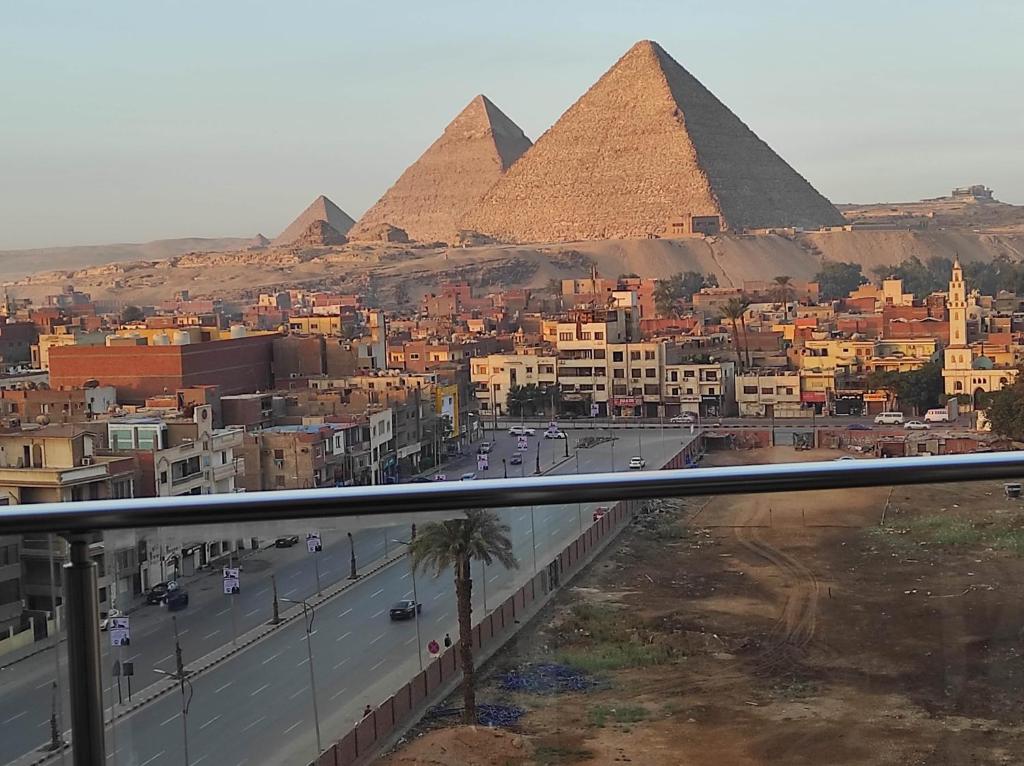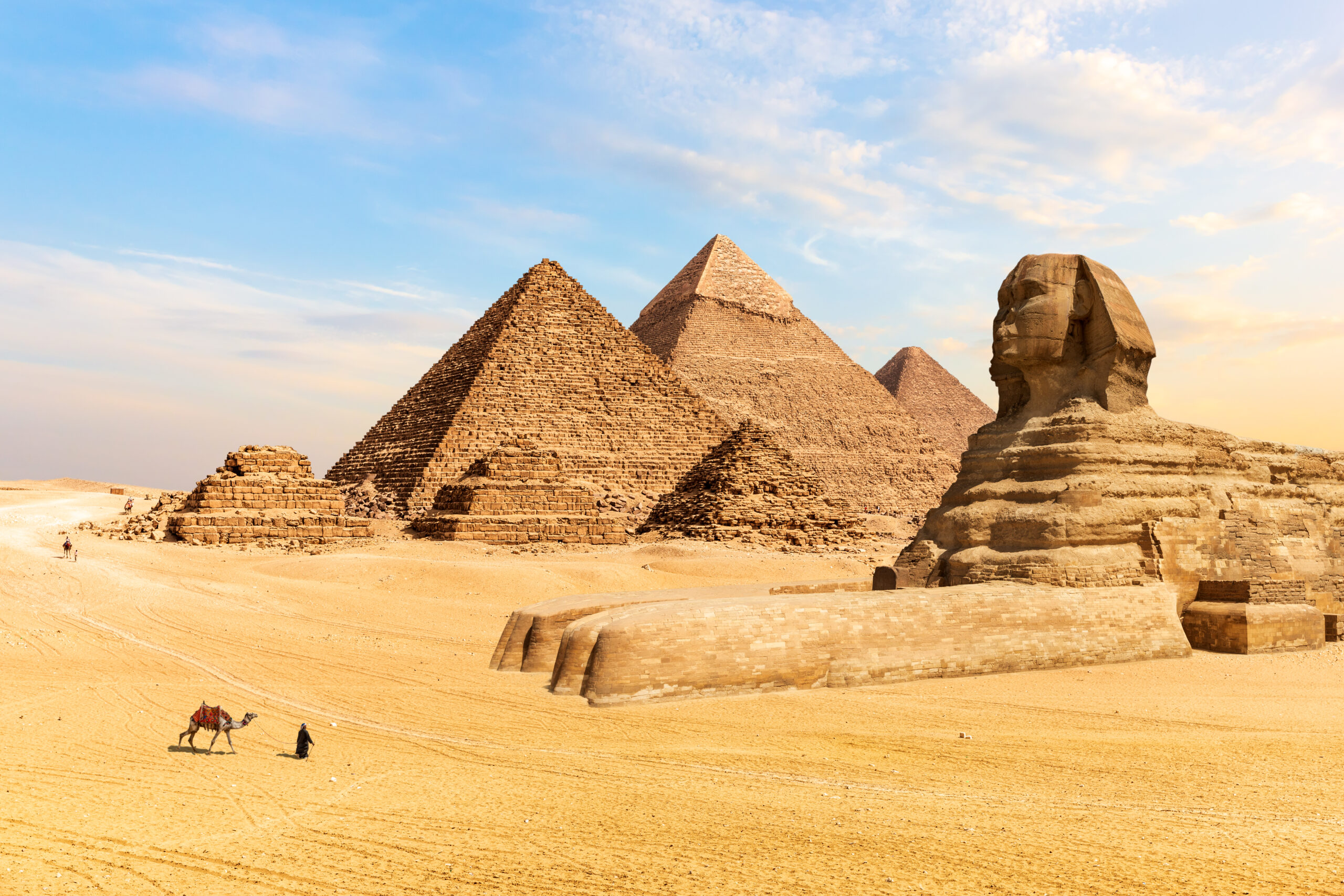Table of Contents
ToggleAre you considering Pyramids of Giza as view for you new apartment?
The Pyramids of Giza, one of the Seven Wonders of the Ancient World, are not only an icon of Egypt’s ancient civilization but also a focal point for tourism, national pride, and increasingly, real estate speculation. In recent years, property development near the Pyramids has surged, drawing both local and international investors. But is investing in real estate near the Pyramids a savvy move—or just another overhyped trend?
This article delves into the pros and cons of investing in real estate near the Giza Plateau and evaluates whether the area presents a genuine opportunity or an illusion of one.
The Allure of Location
There’s a timeless real estate mantra: location, location, location. And what could be more iconic than a view of the Great Pyramid of Khufu or proximity to the Sphinx?
Developers are banking on that allure. Luxury villas, gated communities, and hotel-branded residences have sprung up in areas like Hadayek Al Ahram and Pyramids Gardens. For some, living or investing in the shadow of 4,500-year-old monuments is the ultimate status symbol. Tourists, too, are drawn to accommodations close to the site, making short-term rentals in the area highly desirable—at least on paper.
In 2023, the Egyptian government unveiled the Grand Egyptian Museum (GEM), situated just 2 km from the pyramids. This massive cultural and tourism project has already caused a ripple effect in nearby real estate prices. Promoters claim that the museum will attract millions of annual visitors, stimulating retail, hospitality, and residential sectors nearby.
Infrastructure Improvements
Investment around the pyramids hasn’t occurred in a vacuum. The government has heavily invested in infrastructure to support this emerging hub.
Key developments include:
-
New roads and tunnels to improve traffic flow to and from the plateau.
-
The Sphinx International Airport, inaugurated in 2019, now connects Giza directly to global destinations, easing tourist inflow.
-
Enhanced public transportation, including extensions to Cairo’s metro lines and bus routes, making commuting to central Cairo more convenient.
Such infrastructure upgrades are designed to support tourism but have the added benefit of improving the livability of nearby neighborhoods. For investors, this usually translates into appreciating property values.
The Economic Argument
Real estate in Egypt has long been considered a hedge against inflation and currency depreciation—two challenges the Egyptian economy has consistently grappled with. As the Egyptian pound continues to devalue, especially post-COVID and amid global economic uncertainty, many Egyptians and expats are turning to property as a safe asset class.
The areas surrounding the Pyramids offer mid-range to premium pricing compared to neighborhoods in central Cairo. While not exactly cheap, they are still relatively affordable, especially for international investors paying in USD or Euros.
The expectation is that real estate near the Pyramids will appreciate faster than other locations due to:
-
Tourism-driven demand: Short-term rentals (like Airbnb) are becoming lucrative.
-
Cultural significance: The area will never lose its prestige.
-
Limited land: Due to preservation laws and zoning, new construction is limited, which could drive up prices over time.
Risks and Red Flags
Despite the rosy picture painted by developers, investing near the Pyramids isn’t without risk.
1. Overhype and Speculation
There is a danger that real estate near the Pyramids is being driven more by hype than fundamentals. Many developments are sold off-plan, with marketing campaigns focused on “unparalleled views” or “living next to history.” Yet, some of these projects are delayed or lack basic amenities.
2. Tourism Volatility
While Egypt is a top travel destination, its tourism sector is extremely sensitive to global events. Political unrest, security concerns, or pandemics can cause sudden drops in visitor numbers. This directly affects short-term rental returns.
3. Legal and Bureaucratic Issues
For foreign investors, Egypt can be a challenging market. Zoning laws near heritage sites are strict, and legal processes can be complex and slow-moving. Foreign ownership is allowed in certain areas, but there are caps and restrictions.
Due diligence is essential. Title disputes, unclear land rights, or changes in government policy can significantly affect the viability of a real estate investment.
Who Is Buying?
The market around the pyramids appeals to:
-
Local upper-middle-class Egyptians seeking suburban-style villas with proximity to Cairo.
-
Egyptian expats who want to park money in a stable asset and own property in a prestigious area.
-
Foreign investors and digital nomads, especially those interested in short-term rental income.
-
Institutional investors, such as hotel chains or cultural foundations, betting on long-term tourism growth.
As of 2025, more Gulf-based investors—particularly from the UAE and Saudi Arabia—have entered the Giza real estate scene, drawn by Egypt’s low cost of entry and strategic cultural importance.
Comparing Alternatives
Real estate near the Pyramids is only one part of a broader Egyptian market. How does it stack up against other hotspots?
-
New Cairo and the New Administrative Capital: These areas are drawing major corporate headquarters, embassies, and schools. They may offer more practical appreciation potential for long-term residents.
-
Alexandria and the North Coast: Popular for vacation homes and summer rentals, though more seasonal.
-
Downtown Cairo: Undergoing a revival with heritage building restorations and urban renewal projects.
Compared to these, the Giza-Pyramids area is still relatively underdeveloped, with less congestion but fewer services and amenities. For investors focused on cultural tourism and high-profile views, it makes sense. For those seeking steady rental income or urban lifestyle conveniences, other areas might offer better value.
Final Verdict: Hype or Smart Investment?
It depends on your goals.
If you’re an investor with a medium to long-term horizon, interested in capital appreciation driven by tourism and cultural proximity, then real estate near the Pyramids could be a smart investment—provided you do your homework.
However, if you’re looking for quick returns, reliable infrastructure, or hassle-free rental income, the market may be more hype than substance, at least in the short term.
Due diligence is key:
-
Vet developers thoroughly.
-
Check legal documentation and zoning permissions.
-
Be cautious of exaggerated claims about rental yields or appreciation.
In the end, the magic of the Pyramids is undeniable. Whether that magic translates into real estate riches or not will depend on how carefully you navigate the opportunities—beyond the allure of the ancient stones.
Frequently Asked Questions
Why is there growing interest in real estate near the Pyramids?
The area surrounding the Pyramids of Giza has seen increased investor interest due to its unique cultural significance, ongoing infrastructure improvements, and the development of the Grand Egyptian Museum (GEM). These factors are expected to boost tourism and drive demand for residential, commercial, and hospitality properties. Additionally, the symbolic and aspirational value of owning property near one of the world’s most iconic landmarks is drawing both local and foreign investors.
What are the main types of properties being developed near the Pyramids?
Developments near the Pyramids include a mix of:
-
Luxury villas and gated communities targeting wealthy Egyptians and expats.
-
Serviced apartments and short-term rental properties, ideal for tourists.
-
Mixed-use developments, combining retail, hospitality, and residential offerings.
These properties are often marketed with themes of heritage, exclusivity, and tourism-driven rental potential.
How has infrastructure development impacted property values near the Pyramids?
Infrastructure improvements such as the expansion of roads, the opening of the Sphinx International Airport, and enhancements to public transportation have significantly increased accessibility to the Giza Plateau. These upgrades make the area more attractive for both residents and tourists, contributing to rising property values and growing interest among developers.
What role does the Grand Egyptian Museum (GEM) play in real estate dynamics?
The GEM, one of the largest archaeological museums in the world, is expected to attract millions of tourists annually. Its presence has positioned the surrounding areas as high-potential zones for tourism-focused investments. Developers are leveraging the museum’s anticipated footfall to promote nearby real estate as lucrative for short-term rentals, commercial spaces, and hospitality ventures.
Is the real estate market near the Pyramids driven by actual demand or speculation?
While there is genuine interest due to tourism and improved infrastructure, much of the current growth is speculative. Developers and marketers often hype projects with promises of high returns and proximity to iconic views. Some projects are sold off-plan without solid delivery timelines or amenities, creating a risk for investors attracted by the marketing more than the fundamentals.
